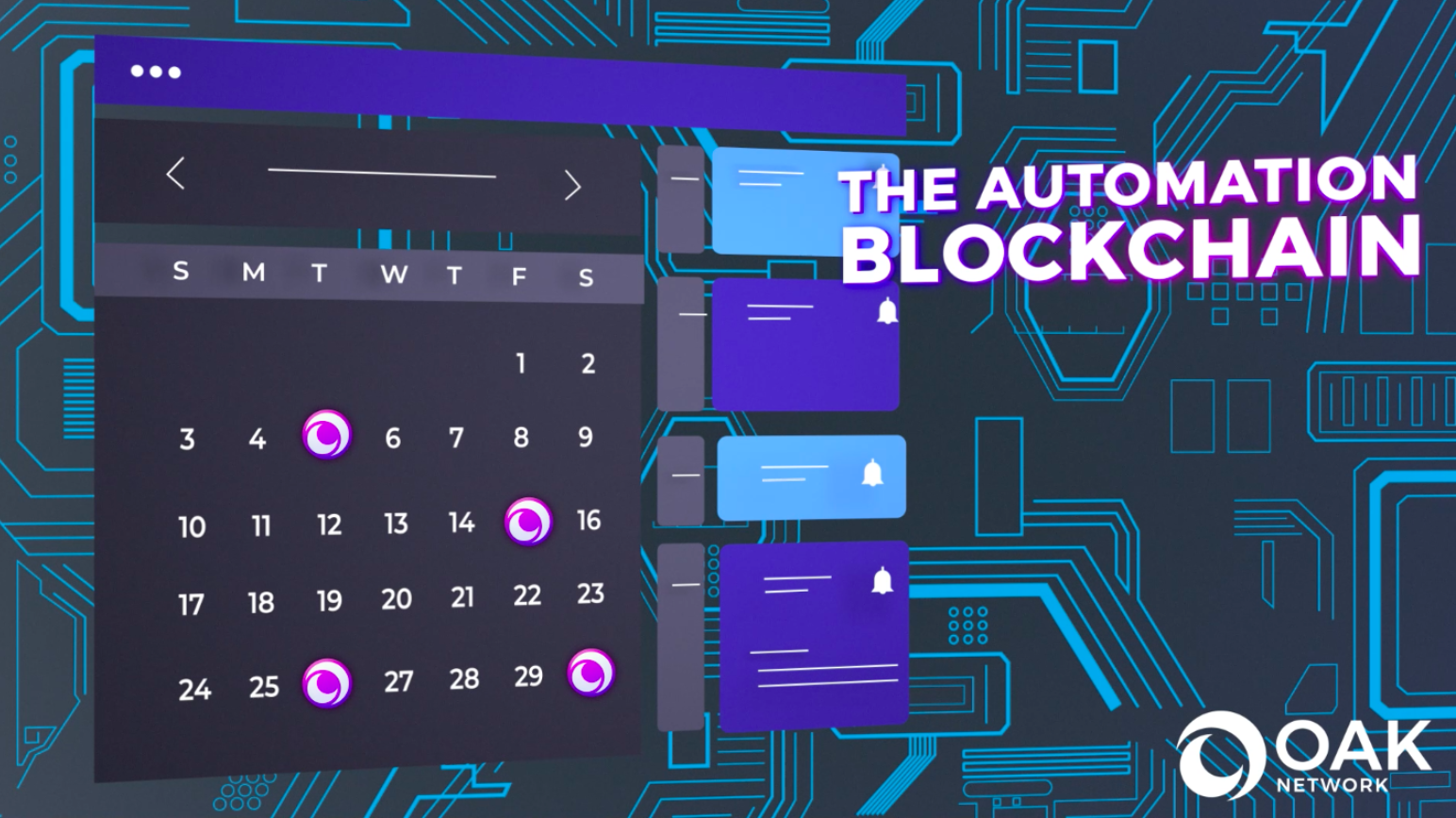
Cross-chain Automation Hub of Polkadot
OAK Network Launch
OAK will be following a similar launch process as Polkadot, Moonbeam, and Turing to ensure the stability of the network.
After the OAK team, with its community's support, wins a parachain slot on Polkadot, the rollout process below kicks off. While the dates are best effort targets, they are subject to change depending on launch conditions.
Phase 0: Parachain On-boarding
Target Date: Q1 2023
The Genesis block is launched, and the network is supported by service providers that the OAK team are managing.
Goal
- To launch OAK with minimum viable functionality including block production & finalization, secured system, upgradability and basic pallet functionality.
- Once we have been running in a stable way for at least 1 week we will release additional features for our automation pallets.
Technology Updates
- Minimal requirement for centralized block production
- Closed collator set (C=4) hosted by the OAK Foundation, and BlockDaemon on behalf of the OAK team. Additionally, we’re asking independent service providers (e.g. StakeBaby) to be part of this set.
- The OAK team will manage sudo (a superuser account controlled by the OAK team).
- Closed valve (our shutdown mechanism for certain features) for:
- Wallet/Balance transfers
- Automation extrinsics
- Governance
- Parachain Staking
Stakeholder Impact
Users of OAK, collators, and crowdloan contributors will have limited functionality at this phase. They will not be able to claim rewards, stake, execute balance transfers, or use any automation functionality. Users will be able to observe block production and finalization via explorers and perform other read-only inspections of the chainstate.
Phase 1: Delegated Proof of Stake
Target Date: after network launch
To enable increased stability and stabilization, once the network has been tested and trialed, we begin adding more third-party collators to the active set.
Goal
- To add staking and delegation mechanisms to third-party collator service providers.
- To monitor the reliability of the system and increase the traffic.
- To ensure the decentralized collator set is performing well with the Polkadot Relay Chain and its validators.
Technology Updates
- Initiate a collator selection.
- Increase active collator set to C=24. Registration done by Sudo.
- Collator selection is permissioned by the OAK team.
- Closed valve for:
- Wallet/Balance transfers
- Automation extrinsics
- Governance
Stakeholder Impact
Users will continue to have have limited functionality at this phase. They still cannot stake for collators until the next phase.
Collators will be able to perform actions necessary for block production. This phase is opened for a select set of collators who have enough OAK token to meet the minimum bond.
Phase 2: Token Distribution Event
Target Date: after network launch
This entails the distribution of the first set of OAK rewards to crowdloan supporters and community members. The distribution will enable folks to use our automation infrastructure.
Goal
- Distribute crowdloan rewards to supporters.
- Enable early supporters to start using our automation.
- Test the automation functionality with a small set of early adopters and team members.
Technology Updates
- The first distribution of crowdloan rewards to supporters.
- 12.5% of “Crowdloan Rewards” allocation will be distributed to OAK crowdloan participants
- Delegators can begin staking to different collators.
- Collator set will increase to C=16.
- Automation features will be enabled.
- Closed valve for:
- Wallet/Balance transfers
- Governance
- The OAK team will continue to manage via sudo to ensure we are upgrading with additional functionality or patches.
Stakeholder Impact
OAK Crowdloan contributors will receive their rewards at this time.
Early adopters can access OAK’s automation functionality. Collators (not in the closed set) are unaffected. OAK token holders cannot transfer tokens to other wallets.
Phase 3: Governance
Target Date: after network launch
Once the team is confident in the stability, we will use the Sudo key to enable governance.
Goal
- To ensure all on-chain governance systems are working as expected.
- To ensure the stability of the system and begin community governance proceedings.
Technology Updates
- Collator set will remain at C=16 (or higher).
- Staking will still be managed by the OAK team.
- Governance is enabled
- All valves will be opened, including Governance
Stakeholder Impact
Any token holder can participate in governance, ensuring the decentralization of the decision making of the network.
Phase 4: Full Feature Launch
Target Date: 2 months after network launch
Any end user with OAK tokens can use OAK automation functionality, staking, wallet transfers, and more.
Goal
- Balance transfers (wallet to wallet) will be enabled via sudo.
- The OAK team will monitor the system closely and work with relevant stakeholders (like collators) to ensure a well functioning system.
Technology Updates
- Collator set will remain at C=16 (or higher) and end users can now stake to delegate collators
- All valves will be opened.
Stakeholder Impact
All end users can use OAK’s automation functionality including but not limited to claiming rewards, execute balance transfers, or use any automation functionality.
The collator set will continue to be permissioned by the OAK team as new features for collator selection and staking are rolled out.
Phase 5: Removal of Sudo
Target Date: TBD
At this point, we remove Sudo (the super user key) and hand over control of the network to token holders.
Goal
- Removing Sudo means we are 100% confident in all systems.
- Once the Sudo key is removed, any extrinsic call that used to require sudo (upgrades, etc.) will now be done through a council motion.
Technology Updates
- The collator set will remain at C=16 (or higher).
- Removal of sudo ownership from the OAK team
- Staking will be open to any OAK token holders for collator selection.
Stakeholder Impact
OAK holders can use the full functionality set for the chain.
OAK holders can now select new collators by staking their OAK to selected collators.
OAK holders have control of the diretion of the chain via governance.

